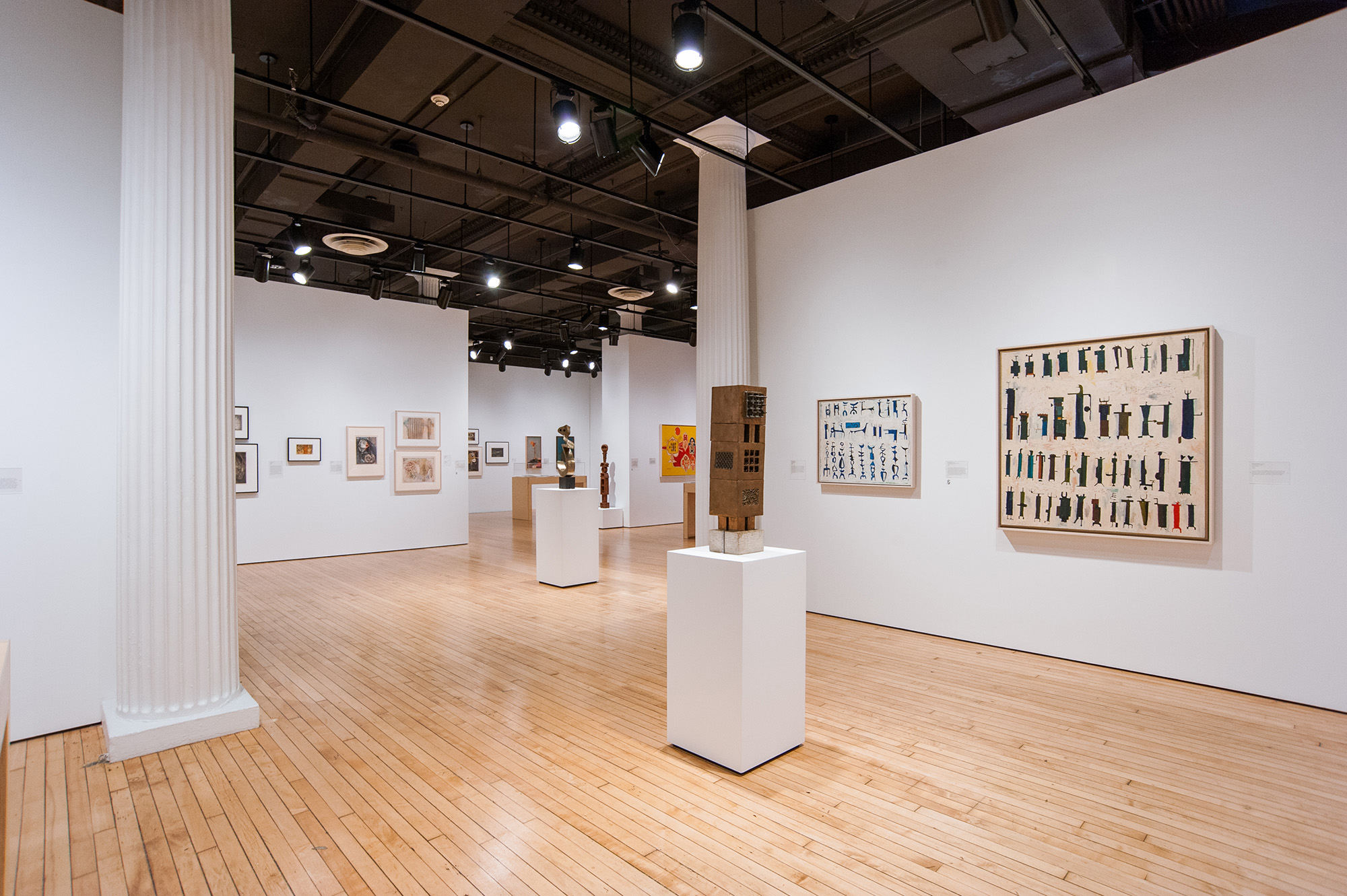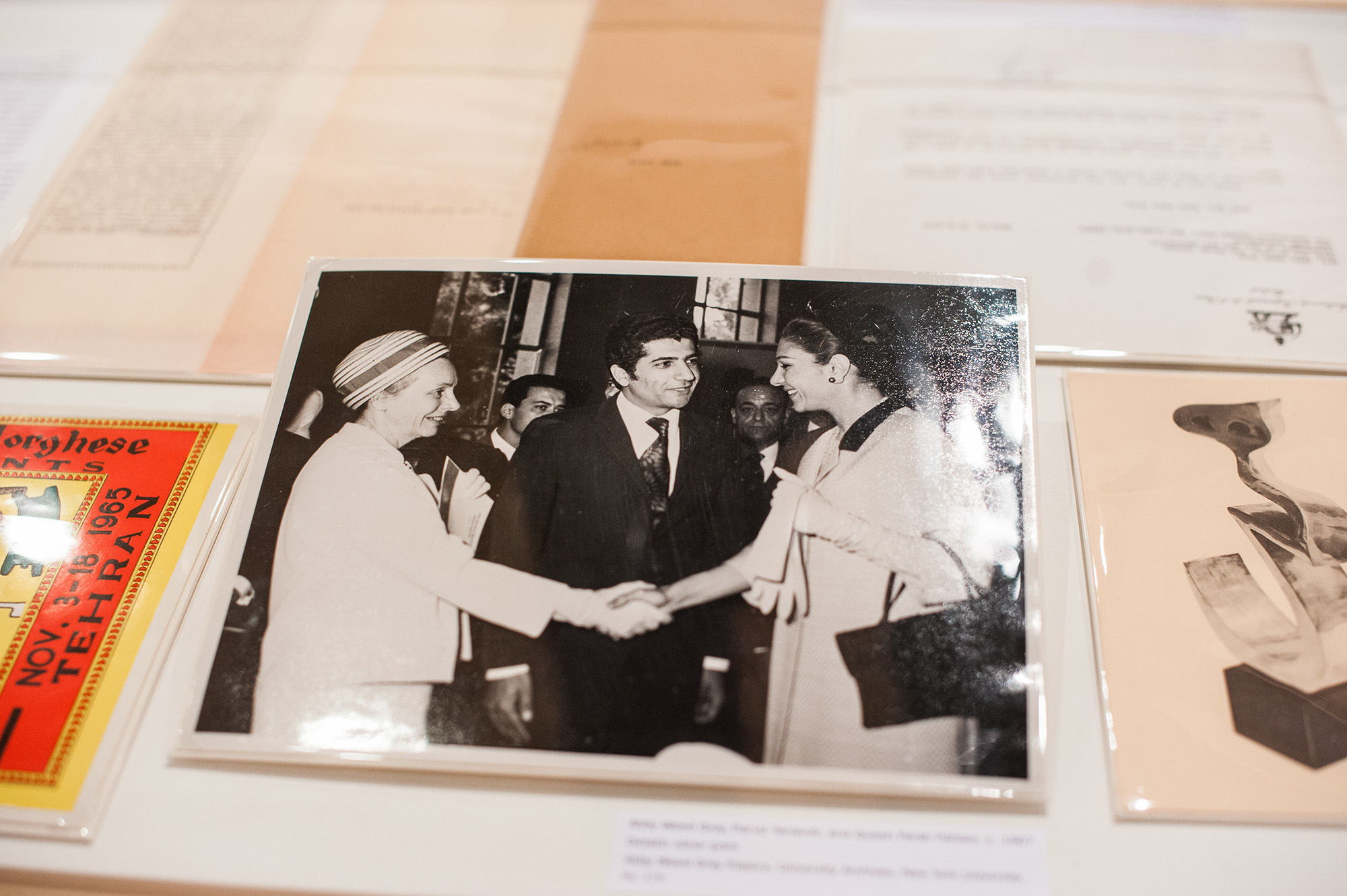Shows
“Modernisms: Iranian, Turkish, and Indian Highlights from NYU’s Abby Weed Grey Collection”


Grey Art Gallery’s “Modernisms: Iranian, Turkish, and Indian Highlights from NYU’s Abby Weed Grey Collection” offered as much a sampling of global art practices during the 1960s and ’70s as it did a glimpse into the collector’s eye. Grey, the museum’s founder, notably sought out contemporary artists in those regions at a time when art discourse remained largely Eurocentric, with cross-cultural exchange as the primary tenet of her collecting efforts during the Cold War. From the approximately 700-piece collection, gallery director Lynn Gumpert selected 114 paintings, prints, and sculptures by 59 artists hailing from three countries that were among those most frequently traveled to by Grey.
Beginning in India, the exhibition featured many of the painters associated with the Progressive Artists Group, established following the country’s independence from British rule. In MF Husain’s Virgin Night (1964), a woman in ghostly white holding a hookah pipe exemplifies the ways in which Indian avant-garde artists blended modern female subjects with allusions to religious figures, such as the Virgin Mary or Hindu goddesses. Hindu cosmology reappears in FN Souza’s Trimurti (1971), a colorful and chaotic portrayal of the three gods Brahma, Vishnu, and Shiva unifying as one force. In the ethereal, gray rendering of Old Delhi (1965), Anjolie Ela Menon borrows the haunting aesthetic seen in her mentor Husain’s Virgin Night.

Displays containing materials from university archives of Grey’s papers detail her process of acquiring and exhibiting works. A notebook entry from 1964, for instance, lists possible collection advisors, including Parviz Tanavoli, a sculptor from Tehran who instrumentally introduced Grey to many of the artists whose works would form her substantial holdings of modern Iranian art.
The sheer volume of pre-1979 Revolution artwork in Grey’s collection partly accounts for why her Iranian acquisitions found such a broad audience during her lifetime and beyond. In particular, Grey championed many practitioners of the Saqqakhaneh school, a neo-traditional modern art movement that reinterpreted Shi’ite Islamic culture and imagery. Tanavoli’s sculptures proliferated within the exhibition space, from Shirin, Beloved of King (1963), a 150-centimeter-tall, black-and-white painted ceramic tower embedded with a metal plate illustrating a Persian folklore, to Heech Tablet (1973), a bronze recreation of the famous Babylonian Hammurabi stele. Geometric motifs recur in Faramarz Pilaram’s Mosques of Isfahan (A) (1963) and (B) (c. 1962), painted in silver and gold, mirroring the ornamental surfaces of Persian architecture. Meanwhile, Siah Armajani finely inscribed Persian poetry and numerical sequences in varying styles and at different angles on the canvas to create texture and shapes in Calligraphy (1964).
Although male artists dominated the Iranian section, Grey’s collection of Turkish art shone a light on female trailblazers. Fahrelnissa Zeid, one of the first women to attend art school in Istanbul, was exhibited alongside members of Group D, a collective inspired by Cubism and Expressionism, as well as uniquely Turkish forms. Zeid’s lithograph Composition in Red and Blue (undated), composed of lines and spots of color, demonstrates her affinity for abstraction. Group D member Eren Eyüboğlu drew inspiration from pastoral life, a significant theme for many Turkish modernists. With shadows partially obscuring the girls’ faces, Two Sisters (undated) captures a more somber impression of peasant life. Grey also purchased works from unconventional non-artists, such as the comic-like self-portraits (both 1965) of writer and poet Nevin İşlek, one of which depicts an almost mocking expression on her face with eyebrows raised.
In 1972, Grey’s ambitions culminated with “One World Thru Art: A Selection of 1,001 Works of Art from the Ben and Abby Grey Foundation” at the Minnesota State Fair Grounds, in her birthplace of St. Paul. In the face of greater geopolitical forces, Grey’s idealism, as conveyed in the utopic title of that exhibition, may seem quaint in retrospect, especially given her privileged status. And yet, that a female collector was one of the few in the United States paying attention to art in Middle East and Asia suggests an attitude ahead of her time.
Mimi Wong is a New York desk editor of ArtAsiaPacific.
“Modernisms: Iranian, Turkish, and Indian Highlights from NYU’s Abby Weed Grey Collection” is on view at Grey Art Gallery, New York University, until December 7, 2019.







